Pasaseong Fortress Site (여주 파사성)
10.0 Km 10314 2020-03-16
Cheonseo-ri, Yeoju-gun, Gyeonggi-do
+82-31-887-2868
The stone walls of Pasasan Fortress stretch along the ridge of the 250-meter-high Pasasan Mountain. The fortress is strategically situated for national defense by being located at the edge of the river bank, from which you can see both upstream and downstream. It is said that the fortress was constructed during the reign of the King Pasa, the 5th ruler of the Silla Kingdom. The walls stretch over 1,800 meters in length. At its highest point, the wall is 6.25 meters tall, and 1.4 meters tall at its lowest point.
Ludensia (루덴시아)
10.0 Km 0 2024-02-23
177 Geumpum 1-ro, Sanbuk-myeon, Yeoju-si, Gyeonggi-do
Ludensia is a European-style theme park constructed using 1.6 million bricks, among which are vintage bricks directly imported from Europe. The park houses various galleries, studios, and a café. Notable attractions include the Train Gallery, boasting over 1,000 model trains; the Antique Gallery, home to a 700-year-old wooden Jesus statue; the Analog Studio, featuring classic albums such as The Beatles' "Yesterday and Today" (1966); and the Tram Studio, showcasing miniature trams.
Yongmunsan Resort (용문산 관광지)
10.2 Km 17440 2021-12-06
Sinjeom-ri, Yangpyeong-gun, Gyeonggi-do
+82-31-773-0088
Yongmunsan Mountain in Yangpyeong, Gyeonggi-do, is comprised of Doilbong Peak, Baegunbong Peak, and other peaks. The resort shares the area with various cultural relics such as Yongmunsa Temple; Yongmunsa Temple’s gingko tree; a stupa containing a relic of the Buddha, a monument of the reverend monk Jeongji; and the Yongmunsan Mountain area’s war record monument. The resort area is frequented by visitors throughout all four seasons but is especially popular in the fall because of the yellow-tinged gingko tree of Yongmunsa Temple (a Natural Monument).
A 2 kilometers trek through the valley from Yongmunsa Temple will bring you to Yonggakbawi Rock, shaped like a dragon’s horn, halfway up the mountain. 1km away from Yonggakbawi Rock lays a huge boulder, Court Rock, on which 100 people can easily sit at the same time. There is also an amusement park that provides great entertainment for children, consisting of a rapid ride, a Viking-boat, a merry-go-round, bumper cars, a family coaster, and other rides.
Thirty minutes from Yongmunsa Temple is Jungwon Valley that looks small when seen from the outside, but leads to the mountain’s summit where you can enjoy a superb view. And only another fifteen minutes walk will bring you to the three-tiered Jungwon Falls where you can enjoy the sound of crashing waters and feel the cooling mists that rise from the base of the falls.
Yongmunsan Wild Plants Festival (양평 용문산 산나물축제)
10.3 Km 9587 2024-04-17
656 Yongmunsan-ro, Yongmun-myeon, Yangpyeong-gun, Gyeonggi-do
+82-31-770-1072
Yangpyeong Yongmunsan Wild Plants Festival is held in the Yangpyeong area, famous for clean water and grand mountains. Wild herbs and vegetables harvested from Yongmunsan Mountain were recorded in Donggukyeojiji (Historical Records of the mid-Joseon dynasty) as being presented to the king as the best in the nation.
Jungmisan Observatory (중미산 천문대)
10.8 Km 14222 2021-06-15
1268, Jungmisan-ro, Yangpyeong-gun, Gyeonggi-do
+82-10-7244-3498
Situated only 40 minute's drive from Seoul, the Jungmisan Observatory is nestled within Jungmisan Recreational Forest 437 kilometers above sea level. In addition to the beautiful natural scenery, the main draw of this particular location is that there is no other place near Seoul as this forest where one can get an excellent view of the night sky. From Seoul, one might expect to see about three stars on a good day, while at the Jungmisan Observatory one can typically observe over 3,000 stars.
Jungmisan Observatory provides an experiential learning center that offers astronomy programs for children, including preschoolers. Children can gain a deeper understanding of space and basic astronomy through various programs, such as stargazing. In addition to the astronomy programs, the observatory also offers forest bathing, forest ecology, and insect learning programs along with the nearby recreational forest.
Heuktodamgol (흙토담골)
10.8 Km 33825 2024-03-13
3 Seokdun-gil, Toechon-myeon, Gwangju-si, Gyeonggi-do
031-767-2855
Heuktodamgol is a traditional Korean restaurant housed in a Hanok-style building. They prepare dishes using soybean paste and soy sauce made with traditional methods, along with freshly squeezed sesame oil and perilla oil. Their menu includes the Todamgol hanjeongsik (Korean table d'hote), kkotge ganjang gejang jeongsik (soy sauce marinated blue crab set menu), and borigulbi jeongsik (barley-aged dried yellow croaker set menu).
Jungmisan Recreational Forest (중미산자연휴양림)
10.8 Km 52616 2022-09-07
1152, Jungmisan-ro, Yangpyeong-gun, Gyeonggi-do
+82-31-771-7166
Jungmisan Recreational Forest unfolds at the end of a lovely drive along the famous Nongdachigogae Road, the highest ridge road in the vicinity of Seoul. The forest boasts a striking landscape of thick groves of trees and a view overlooking the Namhangang River. During some mornings, the forest’s log cabins are veiled by a thick fog, further adding to the beautiful natural ambience.
Rising 834 meters above sea level, Jungmisan Mountain is a popular sunrise destination frequented by throngs of hikers every year. Thick forests of pine trees create a rooftop of branches from spring to fall. Being surrounded by the tall mountains of Baegunsan, Yumyeongsan, and Yongmunsan, Jungmisan Mountain feels like it is in the inner mountainous region of Gangwon-do, although it is close to Seoul.
The forest has log cabins that can accommodate groups of 4 to 10 people as well as campsites that complement the surrounding natural environment. Visitors can enjoy a comfortable walk through the trees on a trail that winds through the heart of the forest.
Yumyeongsan Mountain (유명산)
11.2 Km 33207 2018-07-05
Okcheon-myeon, Yangpyeong-gun & Seorak-myeon, Gapyeong-gun, Gyeonggi-do
+82-31-582-8830
Originally, no name was given to this mountain on topographical maps. But in 1973, when the Empor Alpine Club reached the mountain during a hike across the nation, the club members named it after Jin Yu-myeong, a member of the expedition. On old maps, the mountain had been called Mayusan Mountain because of the horses raised in the area, but today it is more widely known as Yumyeongsan Mountain. The trail that starts from Yangpyeong leads to an expansive and open grassland. The hiking trails are also connected to those of Mount Daebusan and Mount Sogunisan. On the summit, there is a pile of stones, and the view from the top is splendid.
Yeoju Geumsa Korean Melon Festival (여주 금사참외축제)
11.6 Km 9078 2024-05-27
1278 Iyeo-ro, Yeoju-si, Gyeonggi-do
+82-31-887-3893
In late May every year, Yeoju Geumsa Korean Melon Festival is held in the vicinity of Geumsa Park. Visitors can sample Korean melons grown locally as well as experience various activities during the festival.
Sottukkeong Dak Bokkeumtang (솥뚜껑닭볶음탕)
12.1 Km 33426 2024-02-15
130-18 Eobisan-gil, Seorak-myeon, Gapyeong-gun, Gyeonggi-do
Spicy Braised Chicken, a staple in Korean cuisine, is prepared by stewing chicken pieces with a fiery blend of red pepper powder and various seasonings. It’s a dish that complements rice perfectly. Here, the chicken is simmered in a sizeable metal pot with a flat lid, a method that not only retains heat better but also infuses a distinctive flavor and a touch of the chef’s personal care into every bite. The dish’s flavor is enhanced when paired with seasoned green onions, adding a crisp, spicy kick. Following the main course, the leftover sauce is used to stir-fry rice into the visually appealing and tasty Fried Rice Art, often shaped into a heart, delighting both the palate and the eyes. Nearby, guests can hear the gentle flow of a stream and have access to the valley via stairs, offering a chance to indulge in some light water activities after their meal.
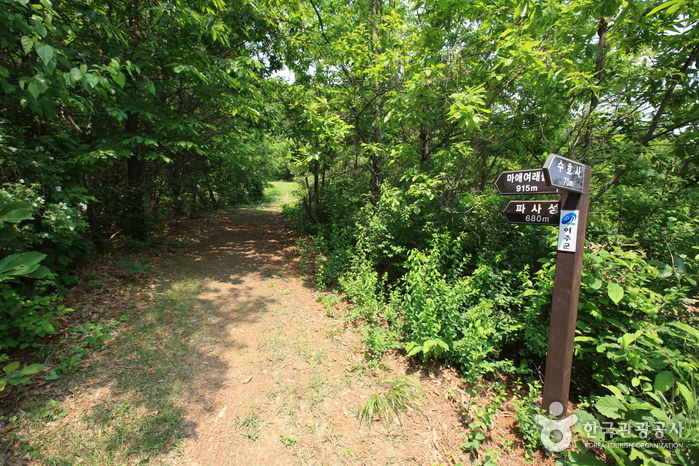

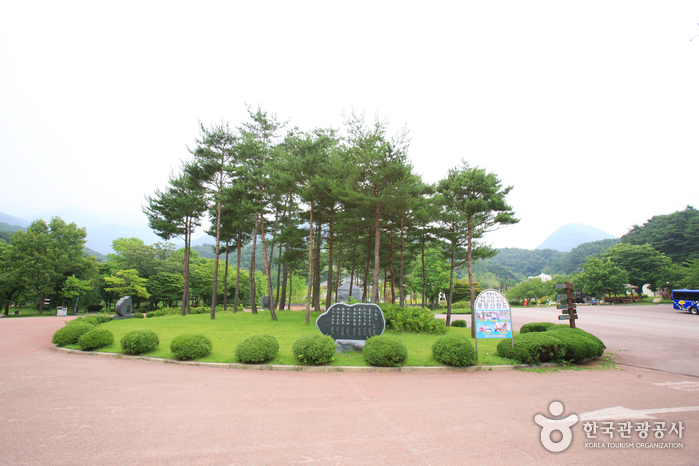
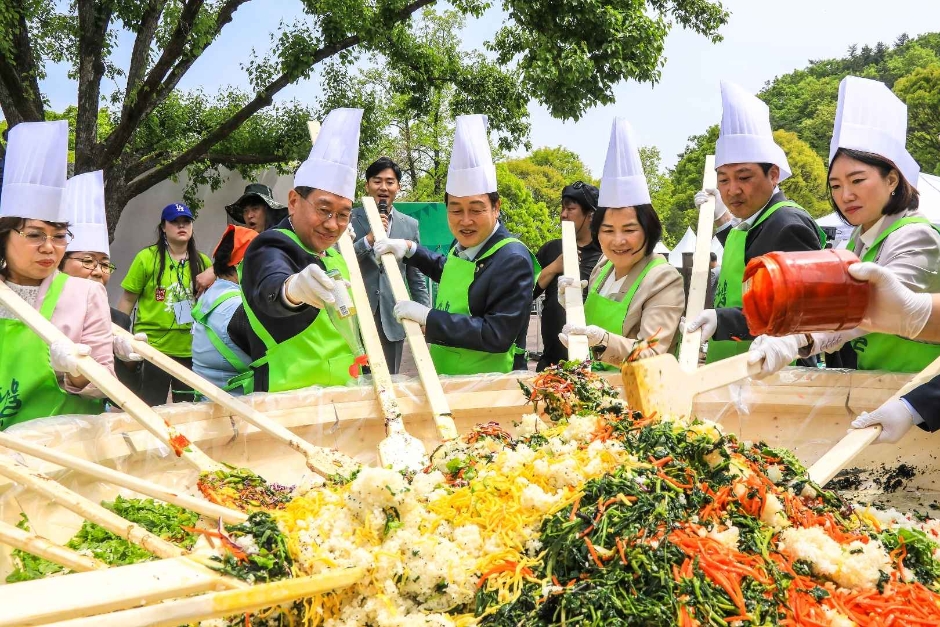
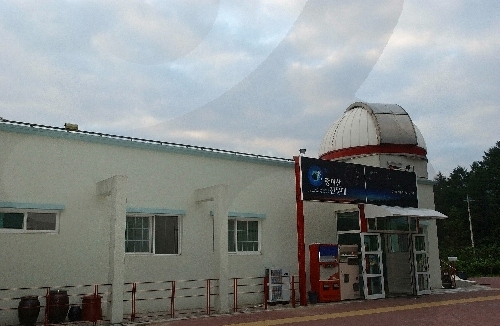
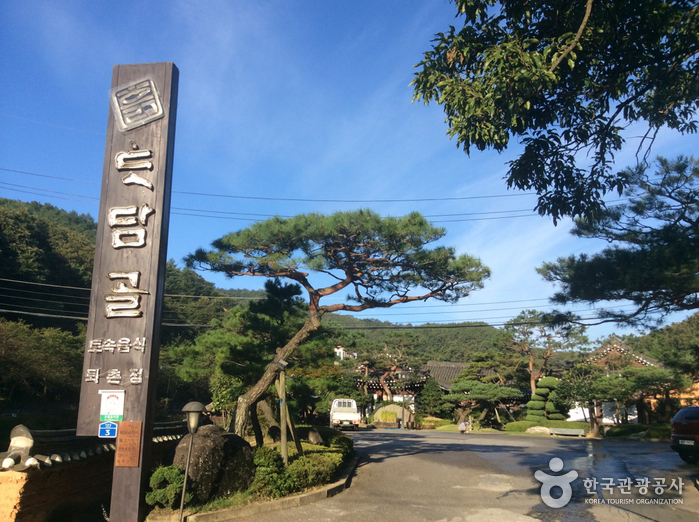
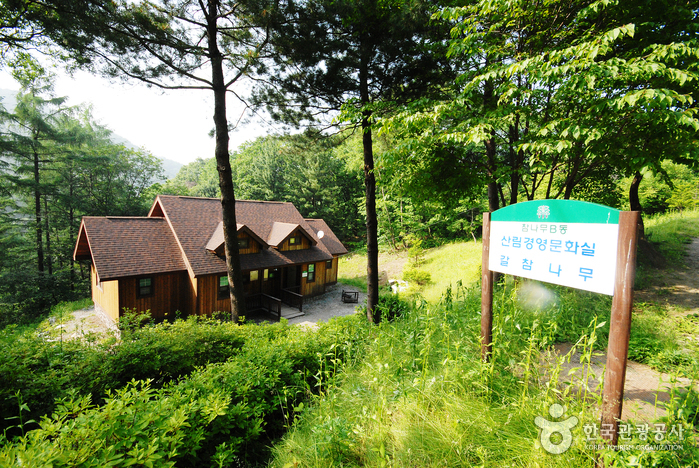
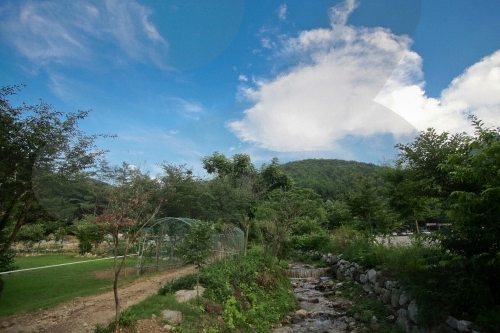
 English
English
 한국어
한국어 日本語
日本語 中文(简体)
中文(简体) Deutsch
Deutsch Français
Français Español
Español Русский
Русский